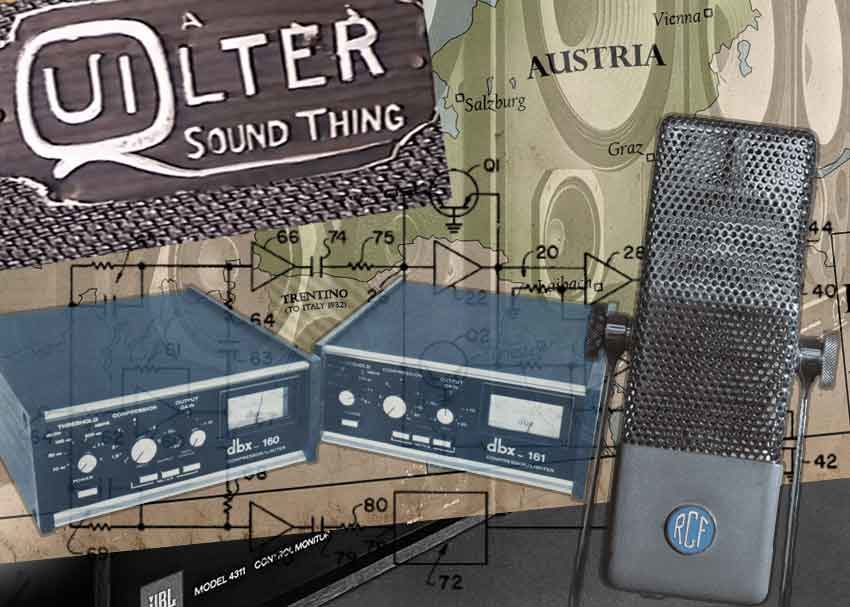AKG stands for…
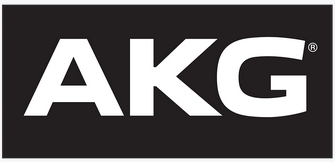 AKG microphones and headphones have been ubiquitous in recording studios across the globe since the 1950s, and the famous initials can be traced back to the company’s early roots in Vienna, Austria. As vertical market manager David Volpe explains, “The initials stand for the Austrian German words for ‘acoustic and cinema equipment,’ Akustiche und Kino-Geräte.” We’ll stick with the initials — it’s much easier to pronounce.
AKG microphones and headphones have been ubiquitous in recording studios across the globe since the 1950s, and the famous initials can be traced back to the company’s early roots in Vienna, Austria. As vertical market manager David Volpe explains, “The initials stand for the Austrian German words for ‘acoustic and cinema equipment,’ Akustiche und Kino-Geräte.” We’ll stick with the initials — it’s much easier to pronounce.
BLUE stands for…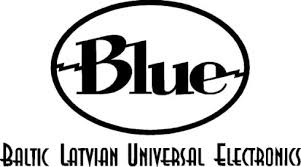
Since everyone pronounces it as “Blue Microphones,” you may not even realize that BLUE is an acronym! It actually stands for Baltic Latvian Universal Electronics. As sales manager Jonathan vonRentzell tells the story, “The ‘Baltic Latvian’ in our name comes from one of the founders, Martins Saulespurens. Martins was the chief engineer at the Riga Academy of Music in Latvia. During the early years of BLUE, the manufacturing of our PRO products was done in Latvia. BLUE was rebuilding and modding vintage microphones, using new technology to improve upon what was done in the past. The goal was to repair and restore microphones produced in the golden age of microphones, namely the 1940s-’50s, adding back the character and quality that many felt has been missed. After realizing how new technology can harness the most colorful aspects of the audio spectrum, new products and the BLUE brand were formed. For several years, we continued to source parts from labs in Latvia, and employed a couple engineers that were based there.” Look closely at the owner’s manual or packaging that came with your BLUE gear, and you might just see the full name spelled out!
DBX stands for…
 Just about every pro audio engineer knows the initials dbx — it’s the brand name on classic compressors like the dbx 160, and more modern tools like DriveRack loudspeaker processors. But how many engineers actually know what those initials for? In the words of Carl Jacobson, director of global marketing communications at Harman, dbx’s parent company: “David Blackmer founded the company. You also have the abbreviation for decibel, dB, so there’s a double entendre.” There’s a slightly more technical interpretation of the name, as well. As Mix Magazine reported in 2008, “David Blackmer founded dbx in 1971, based on the concept of using decibel expansion (hence the name ‘dbx’) to replace the peaks lost from the limited dynamic range of magnetic tape.”
Just about every pro audio engineer knows the initials dbx — it’s the brand name on classic compressors like the dbx 160, and more modern tools like DriveRack loudspeaker processors. But how many engineers actually know what those initials for? In the words of Carl Jacobson, director of global marketing communications at Harman, dbx’s parent company: “David Blackmer founded the company. You also have the abbreviation for decibel, dB, so there’s a double entendre.” There’s a slightly more technical interpretation of the name, as well. As Mix Magazine reported in 2008, “David Blackmer founded dbx in 1971, based on the concept of using decibel expansion (hence the name ‘dbx’) to replace the peaks lost from the limited dynamic range of magnetic tape.”
The IK in “IK Multimedia” stands for…
Maybe you’ve used IK Multimedia‘s SampleTank or AmpliTube software, or you’ve plugged into their iRig hardware. But did you ever stop to think of what that “IK” means? 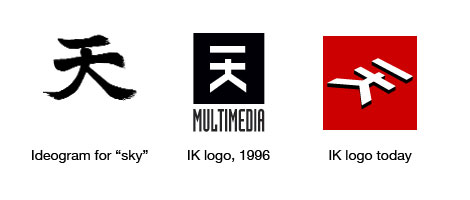 The initials don’t actually stand for words — their origin is more artistic in nature. According to IK Multimedia CEO Enrico Iori, “The IK logo evolved from the ideogram for sky.” Compare the “sky” symbol to the company’s logo through the years, and you’ll see where the “IK” came from.
The initials don’t actually stand for words — their origin is more artistic in nature. According to IK Multimedia CEO Enrico Iori, “The IK logo evolved from the ideogram for sky.” Compare the “sky” symbol to the company’s logo through the years, and you’ll see where the “IK” came from.
JBL stands for…
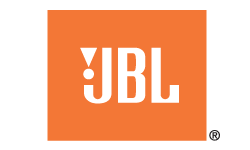 The initialism JBL — seen on loudspeakers and studio monitors all over the world — are short for audio engineer James Bullough Lansing, the company’s founder, and an early pioneer in loudspeaker technology. Per the company’s official history on the JBL Professional website: “James B. Lansing was born James Martini, 14 January 1902, in Macoupin County, Millwood Township, Illinois…for a short time, Lansing lived with the Bullough family in Litchfield, Illinois. He later took their name when he changed his from Martini to Lansing.” After moving to Los Angeles, James B. Lansing established his loudspeaker business as Lansing Manufacturing Company in 1927, then merged with Altec Service Corporation in 1941, forming Altec Lansing, where Mr. Lansing was made VP of Engineering with a five-year contract. In 1946, Lansing left the company on the day his contract expired, and started a new company — James B. Lansing Sound, Incorporated — which was eventually shortened to JBL.
The initialism JBL — seen on loudspeakers and studio monitors all over the world — are short for audio engineer James Bullough Lansing, the company’s founder, and an early pioneer in loudspeaker technology. Per the company’s official history on the JBL Professional website: “James B. Lansing was born James Martini, 14 January 1902, in Macoupin County, Millwood Township, Illinois…for a short time, Lansing lived with the Bullough family in Litchfield, Illinois. He later took their name when he changed his from Martini to Lansing.” After moving to Los Angeles, James B. Lansing established his loudspeaker business as Lansing Manufacturing Company in 1927, then merged with Altec Service Corporation in 1941, forming Altec Lansing, where Mr. Lansing was made VP of Engineering with a five-year contract. In 1946, Lansing left the company on the day his contract expired, and started a new company — James B. Lansing Sound, Incorporated — which was eventually shortened to JBL.
RCF stands for…
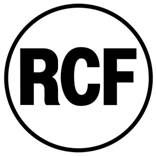 Widely recognized as an Italian manufacturer of loudspeakers, power amps, digital mixers and more, RCF got their start in 1949, first focusing on building ribbon microphones. As the story goes, the name “RCF” was originally taken from the initials of the company’s three founders, but they soon came to be known as “Radio Cine Forniture” — Italian for radio and film supplies. With the rise of amplified concert sound in the 1960s, RCF became one of the first European OEM suppliers of high-power speaker transducers for international loudspeaker brands. In the 1990s, RCF entered the pro speaker market, and the RCF brand began appearing on the speaker grille — not only on the transducers inside. Today, RCF continues to grow as a global manufacturer of active loudspeakers.
Widely recognized as an Italian manufacturer of loudspeakers, power amps, digital mixers and more, RCF got their start in 1949, first focusing on building ribbon microphones. As the story goes, the name “RCF” was originally taken from the initials of the company’s three founders, but they soon came to be known as “Radio Cine Forniture” — Italian for radio and film supplies. With the rise of amplified concert sound in the 1960s, RCF became one of the first European OEM suppliers of high-power speaker transducers for international loudspeaker brands. In the 1990s, RCF entered the pro speaker market, and the RCF brand began appearing on the speaker grille — not only on the transducers inside. Today, RCF continues to grow as a global manufacturer of active loudspeakers.
QSC stands for…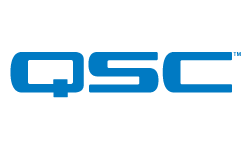
“My early vision for Quilter Sound Company was to take over the world with high-powered, giant guitar amps,” says QSC Audio founder and chairman Pat Quilter of the company’s 1968 beginnings. When the company pivoted their focus to power amplifiers, the emphasis on building quality products for the working musician remained: “Because we dealt firsthand with musicians, we developed this passion for taking care of our customers,” says Barry Andrews, one of QSC’s founders. QSC Audio has gone on to reinvent themselves as a pro audio industry leader, first in power amplifiers, and today in powered loudspeakers and digital mixers. And as QSC continues to grow, Mr. Pat Quilter continues to design boutique solid-state guitar amplifiers at Quilter Laboratories, founded in 2011.

